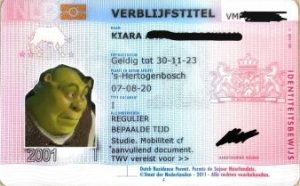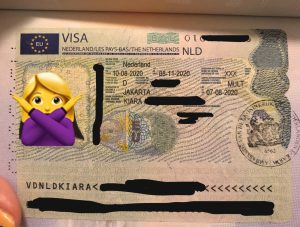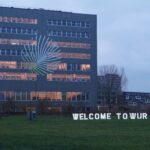A No-BS Guide to Student Residence Permits and Entry Visas
Starting your studies at the WUR as a non-EU passport-bearing student does come with many downsides. Not only do you have to go through a more drastic transition period being so far from home, you also have the hassle of sorting out the legal what-nots such as obtaining a residence permit. I remember religiously checking my emails every single waking hour for my entry-visa (also called the MVV by the Immigration and Naturalisation Services (IND–these are the immigration people from the government)) approval before first moving here, only finally getting it approved 2 days before when my flight was scheduled. Yeah, book your flight after your visa’s approved, I was very lucky. However, since this was 3 years ago, I won’t be covering much of my own experience in this blog as the procedure has changed a little since. However, I got some help from the ladies of the university’s Student Immigration Office (SIO) and hopefully I could summarize everything you need to know about the immigration procedure with this no-BS guide!
What documents do I need to legally stay in the Netherlands?
If you’re an EU/EEA student, I don’t know what you’re doing reading this post, you literally can go around (most of) the continent with your passport without any additional document.
If your a citizen of either Australia, Canada, Japan, Monaco, New-Zealand, South Korea, the UK, the US or Vatican City, you will need a residence permit but you can enter the Netherlands without an entry-visa. The Student Immigration Office will send you the approval letter from the IND. However, you will still need to provide the IND with your biometric data by making an appointment so they can print your residence permit. Also this will be explained by the University during the process so don’t fret.
If you are a citizen of any other non-EU country, you will need an MVV to enter the Netherlands before your residence permit is printed by the IND and ready for collection. Don’t worry, the university will also inform you about the steps how to collect the residence permit in the Netherlands by yourself.
For those wondering, the residence permit(left) and MVV(right) looks kind of like this (no Shrek included, he’s just there to cover my face) :
What you need to prepare
- You need to be admitted and paid the invoice (the invoice which usually includes tuition fees, living deposit, immigration process fees “dues” and insurance ). If you need help with this process, you can visit this link.
- Make sure you have a valid passport. This means that it is still valid at least 6 months after the start of your programme. A scan of this will also be required which you should upload to the WUR application portal. In this scan, you should include all your personal data, your signature, your passport number, date of issue and expiry date. If you’ve visited the Netherlands before, you should also include the exit stamp of the custom services at the airport from your last visit (not bigger than 20GB and no empty pages).
- SIO starts to send out students’ applications to the IND from May-June for September intakes and from October-November for February intakes. Thus, make sure to have settled your admission and payment ASAP. After this what is mentioned above SIO will open the legal residence process in your portal as a questionnaire/form and send the announcement of it by email to you. This will only be started after you have been (conditionally) admitted and have paid the invoice or submitted a scholarship letter that covers it all. Fill this in and upload to the portal along with all the other documents they ask for. The SIO will check the documents on your portal and help you review it with the portal as a means of communication (do not send by (e)mail). The SIO may ask you to upload other documents and please do accordingly using the portal.
If you have prepared these, congratulations, you’ve done the bulk of your part of the immigration procedure! The university will do the paperwork with the IND and all you need to do is sit back and wait for instructions by e-mail.
What to expect afterwards
Usually, the IND will process your documents within 2-3 weeks. However, if the IND is very busy this may take up to 8 weeks.
Once the SIO receives a letter of approval from the IND, this will be sent to you too via email with an entry-visa issue form. This is only if the SIO have applied for your entry-visa and residence permit. You will have to make an appointment yourself at the embassy allocated to you, as stated in the email/letter. Again, do this as soon as possible (but only after the 1st of July) as the time slots fill up quickly and once an embassy is allocated to you, it is out of the SIO’s hands and all up to the IND/The Dutch Embassy of the allocated city.
If all these is done on time, you should receive your entry–visa before the start of the academic year. The entry-visa is valid for 90 days and for Multiple entry type D, so make sure to collect the entry-visa and enter the Netherlands within these 90 days and before the expiry data of the entry-visa sticker.
If SIO have applied only for your residence permit you will get only an approval letter. The status on your portal will also change for the legal process.
The residence permit itself will only be issued once you’re here in the Netherlands already, and only if the biometric data is in the position of the IND. So don’t worry if you haven’t received that before entering the Netherlands. This will be available during the collection days organized by the IND. For the September 2023 intake, this will be on the 2nd of September or the 7th of October in Utrecht. The collection timetable will be allocated to you in August, so look out for an e–mail.
This concludes my “blog” for this time. It’s quite a read but I hope this clears up any confusion you might have had with the immigration process. Good luck and maybe I’ll catch you at Wageningen!





